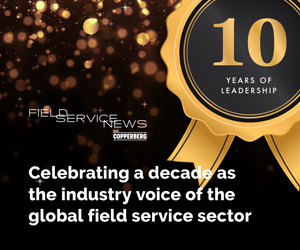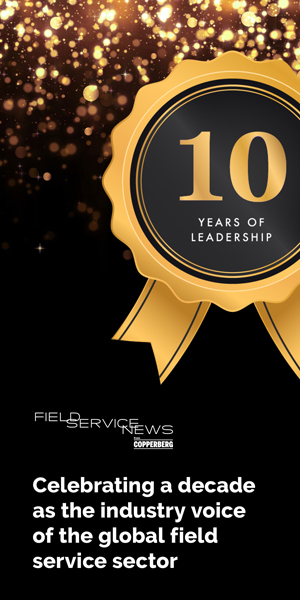One of the big trends within the field service sector is the move towards adopting an advanced services or outcome-based service approach.
However, it should be remembered that service is not a one size fits all category and it is important to understand the different requirements that your customers require and to offer a service approach that meets their needs…
In a recent online session of the Field Service News Think Tank series it was inevitable that the topic of outcome-based services would come up, it is a frequent discussion amongst field service executives in almost every sector and in every corner of the globe. However, one of the most critical aspects of this journey is understanding the different needs of our customers and establishing service strategies that fit those requirements.
“If you look at our call out services, some customers don’t even want people to pick up the phone immediately -they are happy to just accept a longer response time,” explained Patrick Jansen, Field Service Manager, VBR Turbines.
“Other customers really have an essential piece of machinery that for them is critical to their production. So, if they have a problem they want you to pick up the phone immediately. It is quite a broad service level that we offer for our clients and it is really custom made. But the thing is we don’t work with a huge amount of companies, we serve a niche market. We are not a Samsung serving a million mobile phones, we serve smaller industry vertical within a complex niche sector, so our service towards them is also quite different from having to serve a lot of volume.”
Jan van Veen, Founder, moreMomentum felt that the first important factor in the conversation was to identify exactly what the value proposition we were offering to our customers.
“First of all remote capabilities are a capability it is not a value offering in and of itself. We can categorise value propositions in three categories. ‘Do it with me’, ‘do it for me’ or ‘I’ll do it myself’,” Van Veen explained.
“In times of crisis such as now, some companies look to outsource the maintenance because it is so critical to keep them going. Others, may go the other way again because it has become mission critical, but their response is to bring things under their control.”
– Jan van Veen, MoreMomentum
“There are quite a few manufacturers who are more in the do it yourself mode. They have their own maintenance department and they are building their digital capabilities as well. I even know a few manufacturing companies whose maintenance departments are bigger than their vendors. So, who has the knowledge and the data and the capabilities in this equation? It could be that in your industry there are quite a few large segments who are not that interested in having all the data go to you and for you to solve their problems as they want to do it themselves.
“The questions then become how can you support them with some digital capabilities on board your equipment or with connectivity?
“I think it is good to be aware of these three differing types of value propositions, what is the current status looking at the most important clients you are working with and how could that change in time? For example, in times of crisis such as now, some companies look to outsource the maintenance because it is so critical to keep them going. Others, may go the other way again because it has become mission critical, but their response is to bring things under their control.”
For Eddie Storan, Head of Global Services, Domino Printing Sciences the challenge was even more complex than understanding the nuances of different service requirements as they also have to contend with significant variance in customer size and with organisations spread across the globe.
“As we operate across 5 different industries, we provide a range of different services and offerings based upon the complexity of our customers. For example, from large global customers to the other end of spectrum of smaller organisations where their production is seasonal with short production runs and high variation,” Storan explained.
“These customers may not have the same infrastructure and maintenance teams as the larger organisations. However, like all customers “up time” is critical and if there is an issue, they want it resolved instantaneously. That is where we see remote connectivity being utilised through our cloud-based connected services. These types of customers generally tend to be more focussed on support.
“I personally see the rise of the blended workforce, where we have a mix of third-party and our own workers becoming quite prominent.”
– Kris Oldland, Field Service News
“Our larger customers in addition to remote support look for data insights into their production lines across the different technologies we have installed in their plants.”
“I think that recognizing that different companies will have not only different needs but also different desires in how they work with us as service providers is an absolutely essential component of modern service design,” commented Kris Oldland, Editor-in-Chief, Field Service News.
“It is something that I have spoken and written about quite a lot, largely building from the model that was established by Caterpillar of three tiers of service i.e. ‘Do it for me’, ‘do it with me’ or ‘let me do it myself’. We need to essentially establish different gears, different speeds of service for different clients much as Patrick has alluded to.
“I think one part of the discussion that also gets overlooked is what doing so means when it comes to workforce design. In fact, this is one area in which I we need to focus some greater attention. I personally see the rise of the blended workforce, where we have a mix of third-party and our own workers becoming quite prominent.
“Our internal staff being more focused on the more complex mix of services embedded with an outcome based model and third-party staff to take on the bulk of routine work.
“However, the key to getting that right will be in our ability to harness technologies such as remote diagnostics tools, knowledge bases and augmented reality,” Oldland concluded.
Want to know more? There is an Executive Briefing from this Field Service Think Tank Session is available in the premium content library.














